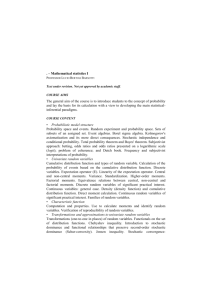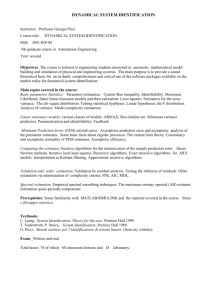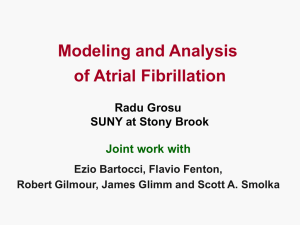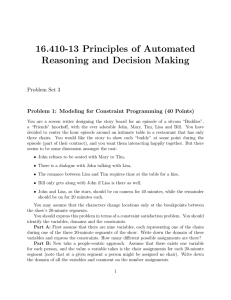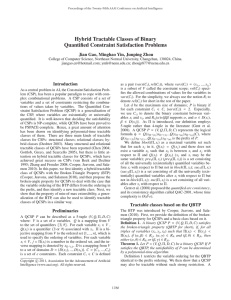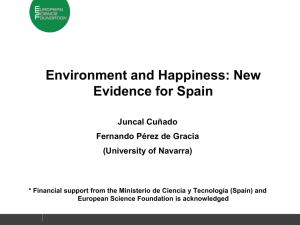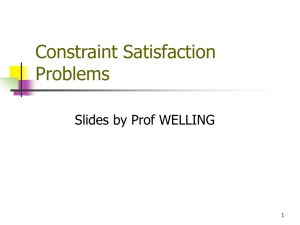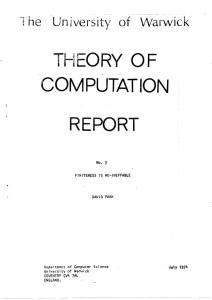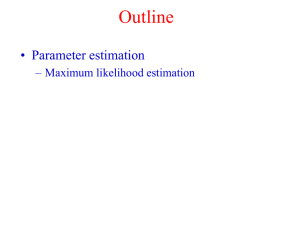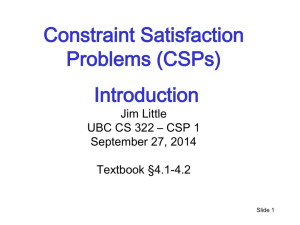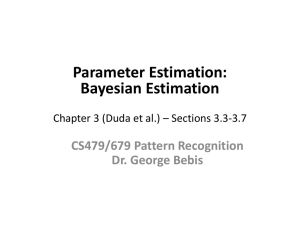Asymmetry of the Exchange Rate Pass
advertisement
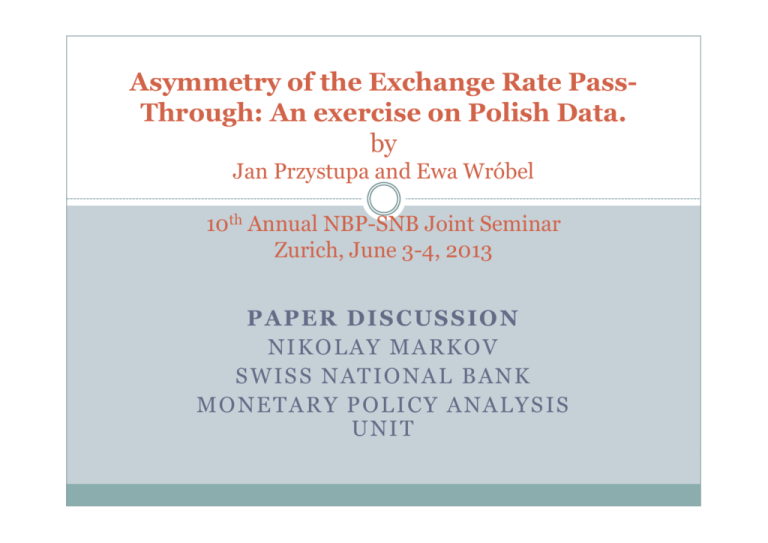
Asymmetry of the Exchange Rate Pass PassThrough: An exercise on Polish Data. by Jan Przystupa and Ewa Wróbel 10th Annual NBP-SNB Joint Seminar Zurich, June 3-4, 2013 PAPER DISCUSSION NIKOLAY MARKOV SWISS NATIONAL BANK MONETARY POLICY ANALYSIS UNIT Modelling framework Import I t price i model d l Cointegration relationship (Johansen/FMLS) Vector V t Error E Correction C ti (VECM) mechansim h i Nonlinear modelling (currency appreciation/depreciation) Models M d l based b d on a hybrid h b id N New K Keynesian i Phillips Philli Curve Threshold Autoregressive Models (TAR) Threshold variables: output gap, NEER, NEER volatility and inflation. inflation Nonreversible linear model approach Key findings Incomplete I l t pass-through th h iin th the short h t and d llong run (i (in th the range of 0.7-0.9 in the cointegrating vector). Pricing to market behavior in the short and long run. run No evidence of nonlinearity in the reaction of the import prices to the exchange rate. rate Rejection of the hypothesis of asymmetric reaction to the exchange g rate ((currencyy appreciation/depreciation) pp / p ) in the import price model. Key findings Evidence E id off asymmetry t ffor th the CPI regarding di th the output t t gap, exchange rate change and its variability. Lower level of exchange rate pass-through pass through with the nonlinear Phillips curve models. Low Low-pass pass through occurs in the event of a currency appreciation and economic contraction. High g p pass-through g occurs in the event of a currencyy depreciation and economic expansion. Main comments and extensions No N financial/post-financial fi i l/ t fi i l crisis i i period i d coverage (2008-) (2008 ) which would be particularly relevant for the nonlinear approach. Longer time period. Disaggregate analysis at the industry level (panel approach). PSTR/PTR / models for the analysis y of nonlinearityy along g the lines of González, Teräsvirta et al. (2005) Regime-switching g g models (LSTR/MRS) / along g the lines of Gerlach and Lewis (2010) for instance. Main comments and extensions Other Oth forms f off nonlinearity li it (nonlinear ( li model, d l nonparametric estimation). Other transition variables (qi ): monetary aggregates Real-time data issue in the Phillips curve estimation (output gap). gap) Use of a monthly frequency which would provide more precision ((relevant for p p prices and exchange g rate variables). b ) Tests of exogeneity (Hausman/Sargan tests). Minor comments Estimate E ti t a Threshold Th h ld VECM already l d for f the th import i t price i model (pages 37/38). Other tests of unit root and stationarity (PP/KPSS), (PP/KPSS) particularly given the possible small sample bias (page 36). The Caner and Hansen (2004) paper is on instrumental variables threshold estimation (2SLS) assuming an exogenous threshold. Are the threshold variables exogenous (page 41)? What is the set of instrumental variables used in the estimation of the Phillips curve (page 41)? Are they lagged exogenous variables? References Caner, C M M., and dB B.E. E H Hansen. (2004) (2004). Instrumental I t t l Variable Estimation of a Threshold Model. Econometric Theory 20, no. 5: 813 813–843. 843. Gerlach S. , Lewis J. (2010). The Zero Lower Bound, ECB Interest Rate Policy y and the Financial Crisis,, De Nederlandsche Bank Working Paper, 254. González, A., Teräsvirta, T., & van Dijk, D. (2005). Panel Smooth Transition Regression Models. Working Paper Series in Economics and Finance 604, Stockholm School of E Economics. i

